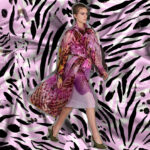In the textile industry we come across 2 types of prints, localized and rotary prints. Many people have doubts about these classifications and their forms of application.
UNDERSTAND THE DIFFERENCE AND ITS APPLICATIONS
LOCATED STAMP
It is the most traditional screen printing process and the most used in the market in general. The process is used on individual pieces and not on the entire fabric. The silk of a T-shirt, for example, where the print is applied over a certain location of your product such as: Print on the chest (front of the shirt), prints on the back, on the shirt's hem, on the sleeves, etc.
We can classify this process in several types of products such as bags, pens, sneakers, caps, backpacks, key chains, in short, all products that silk is printed in a certain location and not in the whole product, the print is classified as localized print.
ESTAMPA ROTATIVA
The Print Race is classified, briefly, when the art is printed on the entire product and not in a specific location.
It can be done in several ways, being print run frame by frame, print run in cylinder, run fake, sublimation and print run digital.
The art engraved on the canvas of the printed pattern is usually composed of smaller drawings, or repetition modules, that fit perfectly in themselves on all sides.
The technique and quality of execution of the repetition module is fundamental to the final result.
Initially the cost of this type of print is high, however, the greater the volume produced, the cheaper the technique becomes.
Therefore, it is worth using rotary prints when they will be used in a good number of pieces.
Well, now that you can understand the existing stamping processes, evaluate which is the best for your production!







